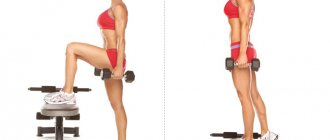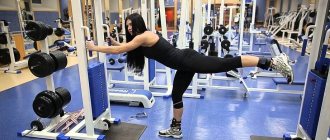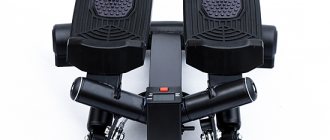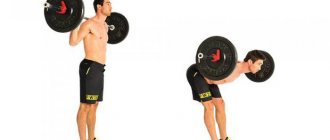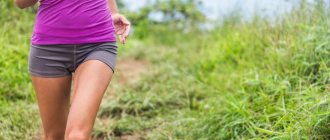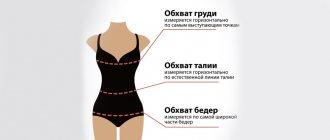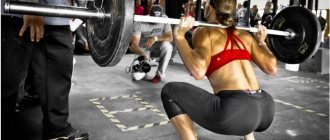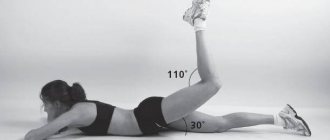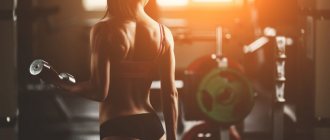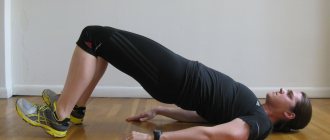Avoiding squats due to back pain? This exercise has worthy alternatives that provide comparable gains in strength and muscle mass.
Author: Jim Stoppani, Ph.D.
Can you imagine yourself in the shoes of a basketball player who has to replace Michael Jordan in the Chicago Bulls? Or in the post of Tim Cook, who continued the work of Steve Jobs at Apple? Or as the quarterback who will replace Tom Brady when he hangs up his cleats? The task is not easy.
My defense of exercises that can replace squats may be met with similar skepticism. Yes, the back squat is the “king of exercises” and I’m as big a fan of it as you are. But if you're concerned about the increased risk of injury, or you just absolutely hate squats, don't force yourself to do squats in the traditional sense.
However, I highly recommend incorporating some variation of squats into your training program regularly (at least once a week). This is a fundamental movement not only in the world of training and sports, but also in real life. I know barbell squats can be dangerous for your lower back and knee joints - believe me, I've had back problems too.
But there are plenty of movement modifications that reduce stress on vulnerable areas and generate excellent growth stimuli for the glutes, quads, hamstrings and other parts of the body. In terms of effectiveness, these options are quite comparable to traditional squats with a barbell on the shoulders.
Below we will look at six such exercises. Incorporate either of these into your routine instead of standard squats, and you'll see (virtually) the same strength and muscle gains as the crowned king.
Alternative 1: Front Squats
Arguments in favor of replacement. It's still a squat, but since the bar is on the chest instead of the shoulders, the difference is very big. Compared to standard squats, front squats target the quads more than the glutes, so this is a great exercise for anyone looking to tone the front of their thighs.
But what is especially important for people with lower back pain, front squats force you to keep your body in the most vertical position (otherwise the barbell will fall to the floor), thereby reducing the load on the spine.
Expert advice. Cross your arms over your chest to create a “shelf” for the barbell. Use the grip that suits you best. Lower yourself until your thighs are almost parallel to the floor.
What muscles work
Muscle work during dumbbell bench press
First of all, the training works the triceps. When performing it, all three parts or heads of this muscle work. If the technique is fully followed, the main load will fall on the medial part of the shoulder.
- Lateral
- Long
- Medial
Most often, novice athletes do not pay much attention to this muscle, since the main role in the structure of the arms is given to the biceps. But this opinion can be considered completely erroneous, since it is the triceps that is responsible for the thickness of the shoulder. And if you don’t develop your triceps correctly and on time, you can get a not very harmonious development of your arms. This muscle should not be trained more than once every seven days.
When drawing up a training program, it is necessary to take into account that exercises for working the chest also load the triceps, so it is recommended to train it on the same day as the chest muscles.
To increase efficiency, you can use different intensities in training, starting with a light load and ending with a heavier one. After a hard workout, you should definitely rest the muscle for about a week.
Alternative 2: Jefferson Squats
Arguments in favor of replacement. The exercise is often called a Jefferson deadlift, but because your back is upright, it's more like a squat than a traditional deadlift, where you have to lean forward because the bar is in front of your legs.
In this variation, you need to “saddle” the barbell. A straight back is the main reason why many people choose Jefferson squats for spinal problems.
Expert advice. The body is tense, chest forward, back straight, rise with the barbell by extending the knee and hip joints, pushing off with the heels. As you reverse the movement, allow your buttocks to lean back slightly. When your thighs are parallel to the floor or the bar touches the ground, return to a standing position.
Alternative 3: Zercher Squats
Arguments in favor of replacement. Zercher squats are another great option for reducing stress on your lower back. The bar is located much lower (in the center of the body, and not on the shoulders), as a result of which the effect of compression force on the spine is significantly reduced.
Similar to front squats, Zercher squats force you to keep your body as vertical as possible, and at the same time allow you to squat quite deeply.
Expert advice. Hang the barbell in a power rack below shoulder height. Place the barbell on the crook of your elbows, bent at a 90-degree angle. Bend your knees and hips; let your buttocks move back a little; lower yourself to the bottom position. When your thighs are parallel to the floor, generate force from your heels to return to a standing position.
Execution technique
Initial position:
- Hold a dumbbell in both hands with a pronated grip.
- Lie on your back on the bench/floor with your knees bent and your feet flat on the floor.
- Lift the weights up onto your outstretched arms so that they occupy a position above the thoracic region and touch the discs.
Movement:
- As you inhale, keeping the part of your arm motionless from the elbow to the shoulder, begin to slowly bend your arms and at the same time spread your elbows to the sides.
- Lower the dumbbells along a semicircle path, turning them with the discs “inward” towards your chest.
- Touch the discs to your chest and use an isolated triceps force to press the dumbbells to the starting position.
- Perform the required number of repetitions.
Attention!
Recommendations!
Execution options
Alternative 4: Single Leg Squats
Arguments in favor of replacement. The single-leg squat exercise has several other names (such as Bulgarian split squats), perhaps because it is a cross between squats and lunges - legs apart, one leg in front, the other in back. A lunge-like position helps keep your back perpendicular to the floor and prevents you from leaning dangerously forward, which often causes lower back pain.
Since one leg is behind you, you can move your front leg as far forward as necessary to protect the knee joint from unnecessary stress. In this exercise, you have a choice: you can put a barbell on your shoulders or pick up dumbbells.
Expert advice. If you choose dumbbells, grip strength may be the limiting factor; in this case, switch to the barbell. Bend your front knee and hip. Lower yourself down until your front thigh is parallel to the floor. As you move up, push through your heel and return to the starting position, using your back leg to balance.
Alternative 5: Smith Machine Squats
Arguments in favor of replacement. Anyone who blames the Smith machine for its lack of “practicality” is not opening their mind to the possibilities that this training tool offers. When applied to squats, the Smith machine has a number of undeniable advantages:
Allows you to safely overload your lower body with heavy weights and maximize mass and strength gains without having to worry about balancing.
Allows you to change the position of your feet and use different parts of your legs. For example, by moving your feet further forward (this will not work with a barbell), you will shift the load to the gluteal muscles, which will be very appealing to those who want to pump up this area with emphasis.
Decreases ankle flexion and reduces stress on the knees as the feet move forward. Think of lunges, where a wider step forward prevents your knees from going past the plane of your toes.
Expert advice. Smith machine squats are a particularly good choice if you're performing the exercise at the end of a training session. For example, when you want to work your muscles with less weight against the background of preliminary fatigue. If you squat on an incline machine rather than a vertical one (the bar moves up and down), place your feet at the front edge of the frame and look forward to make it easier to follow the natural trajectory of the barbell.
Muscle work
The main load goes to the quadriceps (quadriceps muscle of the thigh), and significant tension is also formed in the buttocks. Additionally, they work: the inner thigh, trapezius muscles, hamstrings, calves and lower back. Also, there is static tension in the shoulder girdle, because the projectile is held by hands. Jefferson squats strengthen the muscles of the buttocks and thighs.
Due to a completely different, unlike anything else load on the lower body, the muscles will be shocked, which will cause an increase in volume. Therefore, use this type of squats if you are stagnant or if you want to diversify your leg training.
A barbell is used as a projectile. Select its total weight according to your capabilities so that you can perform 10-12 repetitions. Use small-diameter plates so you can maintain the required squat depth.
Alternative 6: Barbell Hack Squats
Arguments in favor of replacement. At first glance, the exercise may seem a little strange, as if you were doing a deadlift in reverse, because the barbell is behind your legs, not in front of them. But that's the way it's meant to be. In fact, barbell hack squats have been around for many decades, much longer than the machine hack squats found in most commercial gyms.
This movement is unique because the bar is at the rear. The load on the lower back is lower compared to a standard deadlift because you don't have to lean forward as much. This position makes it much easier to keep your center of gravity over your heels, as you would during a standard barbell squat. This is a key benefit for people with low back problems.
Expert advice. Both palms can face backwards, but if you prefer, you can also use a cross grip, in which one palm faces forward and the other back. Keep your back straight (don't round your lower back) and your spine neutral during both the positive and negative phases of each repetition.
LiveInternetLiveInternet
pajibses ( Beauty_contest
) all posts by the author
hyves.ucoz.org/news/2012-11-22-153
Overhead Kettlebell Squats, Single Leg Barbell Squats, Floor Stretch, Lying Hip Stretch, Side Lying Hip Stretch, Olympic Squats, Narrow Foot Barbell Squats, Narrow Foot Leg Press, Narrow foot hack squats, Climber stretch, Bent machine squat, Kettlebell quad stretch, Leg press, Machine leg extension, Kneeling hip flexor stretch, Single leg kettlebell squat, Barbell chest push (partial), Jefferson squats, Quadriceps stretch, Hip flexor and quadriceps stretch, Overhead snatch, Barbell clean (knee level), Barbell clean (hip level), Hack squats, Kettlebell squats, Deep squats with kettlebells, Deep squats with a barbell on the front, Front squats using a bench, Front squats, Jumping, Jumping with squats, Frankenstein squats (squats with outstretched arms), Walking on a bench with dumbbells, Squats with dumbbells using a bench, Squats with dumbbells, Lunges with dumbbells (reverse lunges), Lunges with dumbbells, Snatch deadlifts, Barbell cleans using blocks (stands), Deadlifts, Leg adductions on the lower block, Barbell squats using a box and chains , Squats with a barbell using a box and expanders, Squats with a barbell using a box, Walking onto a bench with a barbell, Squats with a barbell using a bench, Squats with a barbell, Lateral lunges with a barbell, Lunges with a barbell, Squats with a barbell behind the back, Deep Barbell Squats, Quadriceps Stretch, Back Stretch, Double Arm Kettlebell Bent Over Row, Chair Back Stretch, Smith Machine Bent Over Row, One Arm Lat Pulldown, Lat Pulldown, Lumbar Triangle Stretch, Barbell Row Reverse Grip Bent Over, One Arm Kettlebell Raise, Bent Over Dumbbell Row, One Arm Pull Up, Mixed Grip Pull Up, Back Stretching, Incline Dumbbell Shrugs, Supine T-Bar Row, Lying Bent Over Curved Barbell Raise, Decline Row, Neutral Grip Bent Over Dumbbell Row, Bent Over Dumbbell Row, Double Arm Bent Over T Bar Row, One Arm Bent Over Barbell Row, Bent Over Barbell Row, Bent Over Kettlebell Row, Alternating Kettlebell Back Raise , Hyperextension on a fitball, Superman stretch, Bent over with straight legs with a barbell on the shoulders, Stretching the back muscles in a standing position, Forward bends with a barbell on the shoulders (“good morning”) in a sitting position, Deadlifts in a power rack with expanders, Rows in power rack, Power rack row with expander, Lying lower back stretch (“pyramid”), Lying lower back stretch (“bridge”), Low back stretch, Hyperextension on a regular bench using buddy, Hyperextension, Prone stretch, Exercise ball stretch, Platform or stand deadlift, Chain deadlift, Resistance band deadlift, Seated stretch, Lunge and twist stretch, Cat stretch, Barbell deadlift , Triple Stretch, Wide Deadlift,
